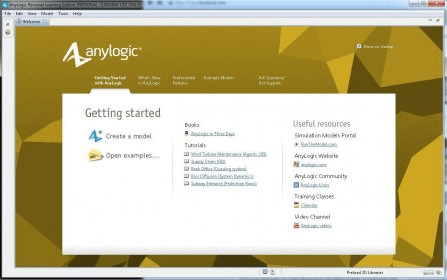

In addition, offering a different review, Macal and North (70) distinguished ABMS toolkits based on their simulation scalability. The NetLogo family belongs to this category. The second category consists of approaches designed to provide a high-level platform that allows people to build and learn from simple agent-based models.

A Java application programming interface (API) is provided to guide the use of state charts, variables, functions, and other miscellaneous tools. For example, in AnyLogic, a model is constructed with one or more active object classes.
#ANYLOGIC 7 PRICE SOFTWARE#
A library of software that implements the framework is also available as a simulation tool. These tools in general provide a framework, which is a set of standard concepts for designing and describing ABMS models.
#ANYLOGIC 7 PRICE SIMULATOR#
The first category follows the framework and library approach, which includes most of the commonly used ABMS toolkits, such as AnyLogic, Repast, Swarm, and Multiagent Simulator of Neighborhoods (MASON). (68) classified ABMS platforms into two categories. They allow programmers to reuse classes (definition of objects) created by libraries or other programmers.They offer run-time testing and debugging environments.They incorporate some features of visual programming, which saves much time and makes development easier, more attractive, and enjoyable.They provide a certain level of abstraction in which programmers can develop their objects.Serenko and Detlor (69) provided a good summary on why agent-based toolkits are needed in general: According to review articles, an agent toolkit could be defined as a software package, application, or development environment that provides modules with a sufficient level of abstraction to allow them to implement agents with desired attributes, features, and rules. There is no universal definition of an agent toolkit. (65-69) These toolkits are in general integrated tool suites, designed to simplify the construction of agent-based models and the development of agent applications. Each software toolkit has a variety of characteristics, and many efforts have been attempted to review and compare these toolkits. Recently, an increasing number of modeling toolkits have become available to facilitate agent-based modeling and applications. The Exploratory Advanced Research ProgramĪ Primer for Agent-Based Simulation and Modeling in Transportation Applications


 0 kommentar(er)
0 kommentar(er)
